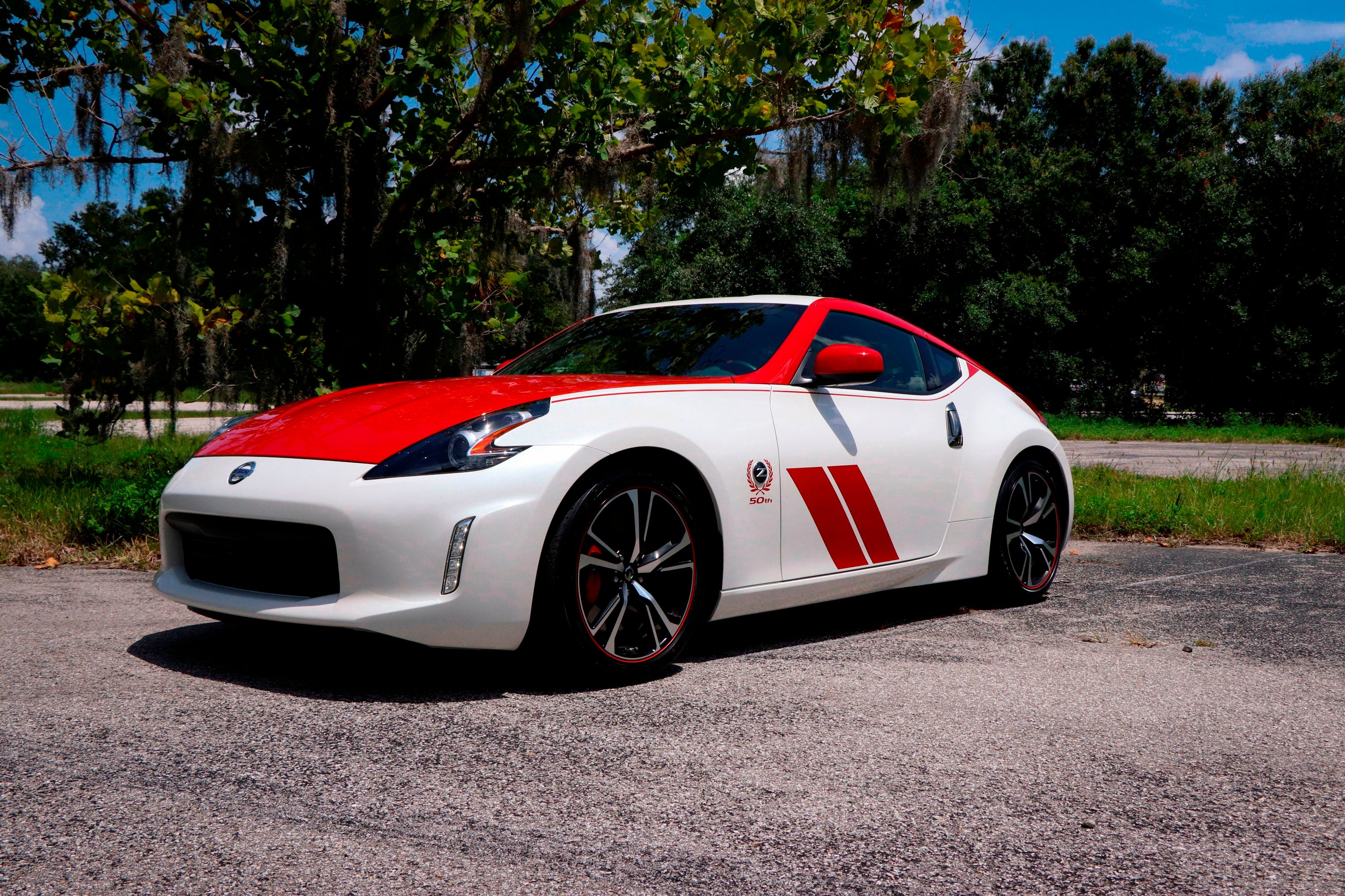
2009. That was the first model year Nissan offered the 370Z sports car and since then, little about it has changed. It still packs a 3.7-liter VQ Series V6 engine, a six-speed manual transmission (or an optional seven-speed automatic), and the least amount of technology you will ever see in the cabin of a 2020 model year vehicle.
Since its introduction, the sports car landscape has changed considerably. Chevrolet reintroduced the Camaro and went through three Corvette generations (including a new mid-engined car), Toyota reintroduced the Supra and partnered with Subaru to build a small sports car, the BMW Z4 was killed off then subsequently brought back, Honda killed the S2000, and the Mazda Miata has gone through two generations.
With all this turnover, is the 370Z still competitive 12 years later? Nissan sent us a 2020 50th Anniversary Edition with the red and white livery to review so we could find out. Here is what we liked about it and what we can't wait to see on the next Z car (if it ever arrives).
Change: The Livery
While the 50th Anniversary Edition harkens back to the Datsun race cars of the 1970s, the 370Z is no race car, and the people who buy it aren't race car drivers. We'd much prefer to buy the 370Z with a normal paint job and most of the looks we received while driving the 50th Anniversary Edition ranged from confused to outraged. You WILL be noticed in this car and after a while, the attention gets old.
Don't Change: The Practicality
Ok, so it's no Corvette in terms of storage space, but the 370Z offers plenty of cargo room to be a daily driver. More sports cars should adopt a two-seat layout with a rear hatch because it offers the best of both worlds. Ride comfort is great in the 370Z and we would have no difficulties driving it every day. We hope when Nissan finally gets around to replacing this car, it will keep the practical hatchback and comfy ride.
Change: The Technology (Or Lack Thereof)
We aren't kidding when we say this car hasn't changed much since 2009. It doesn't even have a touchscreen. There's no Bluetooth streaming audio (unless you get the top trim with navigation), no CarPlay or Android Auto, no adaptive cruise control, not even satellite radio - just a cubby hole where you'd expect the navigation to be. The highest trim level comes with a navigation screen but it's the same unit Nissan used way back in 2009, so you are almost better off getting the base radio and swapping in a CarPlay and Android Auto-enabled unit from the aftermarket.
Buying this car is like telling the world "I'm driving, don't talk to me," which is kind of refreshing at first. But then you just really want to make a phone call, the antique voice command system accidentally calls a girl you haven't talked to since college while she is in a work meeting, and you have to explain that it was the car who called her by mistake. Sorry, Yvonne, it was the 370Z!
Don't Change: Offering A Manual
In our previous encounters driving the 370Z, we weren't huge fans of the six-speed manual transmission. But after driving it for a week, the gearbox endeared itself with its short throws, aggressive changes, and excellent rev-matching system. We left the rev-match system engaged during most of the week and even though it is now 12 years old, we found it helpful during spirited driving. The transmission and clutch can still feel heavy in traffic but we are happy Nissan still offers a manual transmission sports car built with enthusiasts in mind.
Change: Just Give Us A New One Already
Despite being on the market for 12 model years, Nissan hasn't even begun to tease what's next for the Z car. Driving a car with a high-revving naturally aspirated V6 producing 332 horsepower is a pretty unique experience in 2019 but compared to more modern sports cars like the Supra, the 370Z's five-second 0-60 time isn't too impressive. We'd love to see Nissan continue to build a naturally aspirated sports car but the more likely powerplant for the next Z car is Infiniti's 3.0-liter twin-turbo V6 producing 400 hp.
Don't Change: The Price
The 370Z might be old, it might not be the quickest sports car around, and it may have dated technology, but Nissan still manages to sell around a few thousand of them per year. How? There are very few two-seat sports cars that compete in the $30,000 to $40,000 price range. The Miata is less expensive and might be too small (or too slow) for some buyers, while the Supra and Corvette both cost well over $50,000 without any options. There are plenty of American options like the Mustang, Camaro, and Challenger, but not everyone likes how those cars look and drive.
Nissan knows there is still a market for a sports car in this price range, which is why it hasn't just put the 370Z out to pasture. We hope when a successor finally arrives, it will stay in the $30,000 to $40,000 price range where it will have virtually no competition.
